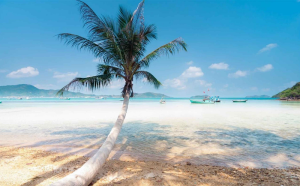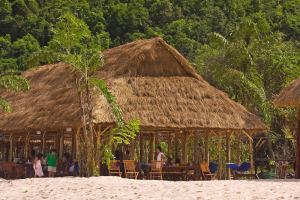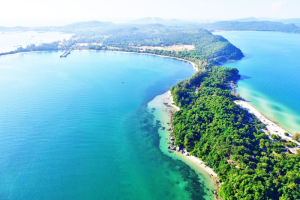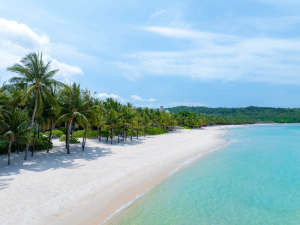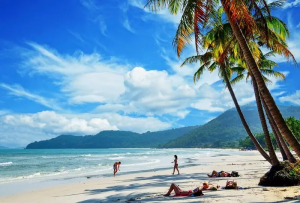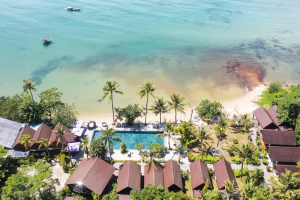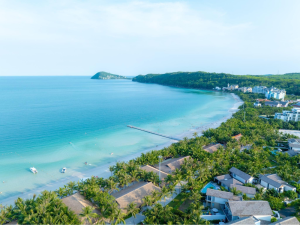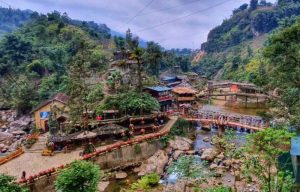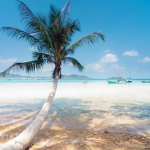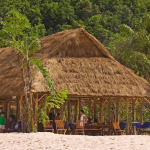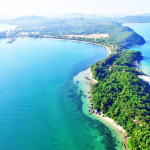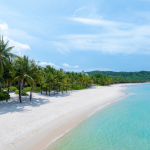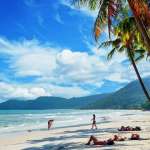Mekong delta food is a day-to-day staple and cultural treasure of Southern Vietnam. Known for freshness and balance-based meals, the cuisine of the region is a reflection of its agricultural strength and culinary heritage. Dishes are handed down from generations by families, farmers, and tiny street food vendors, using techniques that evoke natural flavors rather than sophisticated seasoning.

What makes Mekong Delta food unique?
Mekong Delta food is celebrated for its vibrant simplicity, founded as it is on the rich setting and riverine lifestyle of the region. Foreign visitors will at once be impressed by the freshness and seasonality of ingredients – all herbs and vegetables, freshwater fish, and fruit are locally grown, often from adjacent floating markets and garden beds. Farm‑to‑table freshness is served at every spoonful.
The Delta’s food is reflective of its cultural tapestry, and Kinh, Khmer, Chinese, and Cham customs blend together. Multicultural populations introduce their own cookery methods and seasonings, like grilled skewered fish Khmer-style or noodle soups Cham-style, creating a rich culinary landscape. Travelers who love native culture will appreciate the diversity found in each province, with every dish being reflective of different cultural backgrounds.
An identifying attribute is assertive flavor. Mekong cooking tends to combine sweet, sour, salty, and spicy in strong combinations and delivers a sensory shock that’s both refreshing and comforting in the tropical environment. Take canh chua (sour fish soup) as an example – tamarind sourness with fish, pineapple, okra, and fragrant herbs creates a delicate yet dynamic flavour combination.
The dining experience is more than what’s on the plate. For visitors, eating in the Mekong Delta will equate to interactive environments – hủ tiếu and tropical fruit breakfasts are served from boats at sunrise at floating markets like Cai Rang, and fish cooked in clay pots and grilled snakehead fish roasted on rice straw are served in rough riverside restaurants. The environment sets the context and atmosphere for the meal, and food is a window into the lifestyle.
In addition, Delta’s relation to the earth decides seasonal specialties – summer field crab porridge, autumnal fermented fish hotpot, or flood-season lily soups gathered in the wild are perfect examples of dishes tied to nature’s cycles. Careful timing by visitors allows them to enjoy these seasonal, transitory foods.
In general, Mekong Delta food is unique by virtue of:
- Employing ultra-fresh, locally cultivated materials.
- Combining flavors and techniques from several ethnic cuisines.
- Has rich, full-flavored profiles befitting tropical conditions.
- Usually consumed in traditional settings – orchards, home kitchens, and floating markets.
- Aligns closely with nature cycles and river biology.

Must‑try dishes in the Mekong Delta
When traveling through the Mekong Delta, these signature dishes are essential tasting experiences:
Hu tieu (Southern‑style noodle soup)
Hu tieu – especially the My Tho kind – is a calming and versatile noodle soup made from chewy rice noodles, pork-and-dried squid broth, shrimp, quail eggs, and crispy shallots. It’s often served with fresh herbs, bean sprouts, and lime, so you can customize each bowl to your liking. Eat it plain with broth, or “dry” with dipping sauce, for an anytime meal.
Ca kho to (Caramelized braised fish in clay pot)
An old Southern favorite, ca kho to is freshwater catfish braised low and slow in caramelized fish sauce, garlic, sugar, and pepper over a clay pot. The result is soft fish smothered in a rich, savory-sweet glaze best served over rice. Leaving out fresh herbs or sliced chilies would be regrettable.
Banh xeo (Savory pancake)
The Mekong version of banh xeo is renowned as big, golden-crunchy, and filled with shrimp, pork, and bean sprouts. When it crackles and sends out its aroma into the air, it should be eaten the traditional way – wrapped in lettuce leaves with herbs, and then soaked in the pungent fish sauce. It is a cheeky, finger food that embodies the simplicity of Southern cuisine.
Ca loc nuong (grilled snakehead fish)
This table-to-jungle dish involves grilled snakehead fish whole, on straw or charcoal, and served with rice paper, herbs, and dipping sauce. Customers have the pleasure of building their own wraps, matching caramelized fish with fresh veggie packets – a highly social dining experience.
Elephant‑ear fish (fried gourami)
Eponymous for its broad shape, fried elephant-ear fish is served whole and upright. Sail it off the bones as you eat it, wrap in rice paper with pickles, cucumber, and herbs, and dip in garlic–tamarind sauce. This is a meal to remember because of its visual and interactive aspect.
Banh cong (fried shrimp cake)
These crunchy, donut-shaped shrimp cakes are made of mung beans, shrimp, and rice flour that are deep-fried. They are normally served hot with herbs, lettuce, and sweet–sour fish sauce and are a favorite snack or light meal throughout Can Tho and Soc Trang.
Bun mam & Lau mam
Bun mam is a rich, Khmer-flavored vermicelli soup filled with fermented fish broth, shrimp, fish, and mixed vegetables – a robust, full-flavored bowl.
Lau mam, Delta regional hotpot, has broth of fermented fish, coconut water, pork bones, and regional greens. It’s a communal dish, a warming food in winter months, and a testament to the strong Delta flavors.
Canh chua ca (sour fish soup)
An old-fashioned Delta soup, canh chua offers tamarind-flavored broth with fish, pineapple, tomatoes, okra, bean sprouts, and fresh herbs like ngo gai and Thai basil. Its sweet-sour-savory balance is refreshing and distinctly Mekong
Bún riêu (Crab & tomato noodle soup)
A comforting rice vermicelli bowl in sour tomato soup, topped with minced freshwater crab (or snail), tofu, and shrimp paste. Refreshing finishing touches are bean sprouts, herbs, and lime – perfect for breakfast or lunch.
Banh khot (Mini savory pancakes)
These are small, crunchy rice flour cakes usually filled with shrimp or mung beans. Unlike the big banh xeo, banh khot is enjoyed as finger food: wrap each one in lettuce with herbs and dip into a sweet-spicy fish sauce.
Banh pia (Soc Trang mooncake)
A regional sweet dish composed of layers of wheat dough interlaid with fillings like mung bean, salted egg yolk duck, and durian. Chewy to the bite and sweet-savory in flavor, it’s a popular impulse purchase among visitors.
The Banh bo thot not (Palm sugar sponge cake)
This steamed cake from An Giang utilizes palm sugar and coconut milk, which give it a honeycomb texture and strong caramel taste – perfect for afternoon tea.
Lau ca linh voi bong dien dien (Carp hotpot with sesbania flowers)
A seasonal specialty of the Mekong Delta region, consisting of small river carp and yellow sesbania flowers. The fish is light and floral, accompanied by subtle fish flavor – its peak season is from September to November.
Lau mam (Fermented fish hotpot)
Renowned for its rich, fermented broth, this communal hotpot has fresh veggies, seafood, pork bones, and coconut water. It’s thick, satisfying, and uniquely Mekong in taste
Field crab porridge
The summer favorite, this rice porridge features field crab and duck egg, cooked in greens like water spinach and pumpkin flowers. It’s comforting, flavorful, and tied to classic Delta seasons
Nem nuong Cai Rang (Charcoal-grilled pork sausage rolls)
Grilled in Can Tho’s Cai Rang district, the chewy pork rolls are served wrapped in rice paper with herbs, vegetables, and vermicelli – a tasty fast food.
Ba khia rang me (Sesarmid crab in tamarind sauce)
Harvested on the Soc Trang and Ca Mau mangrove beaches, this small crab is stir-fried in aromatic, pungent tamarind sauce – a savory seafood treat with sweet-sour umami.
Duong dua (Coconut-worm delicacy)
A daring local favorite: deep-fried or raw coconut tree larvae, a testament to the creativity of the Delta in working with local produce.
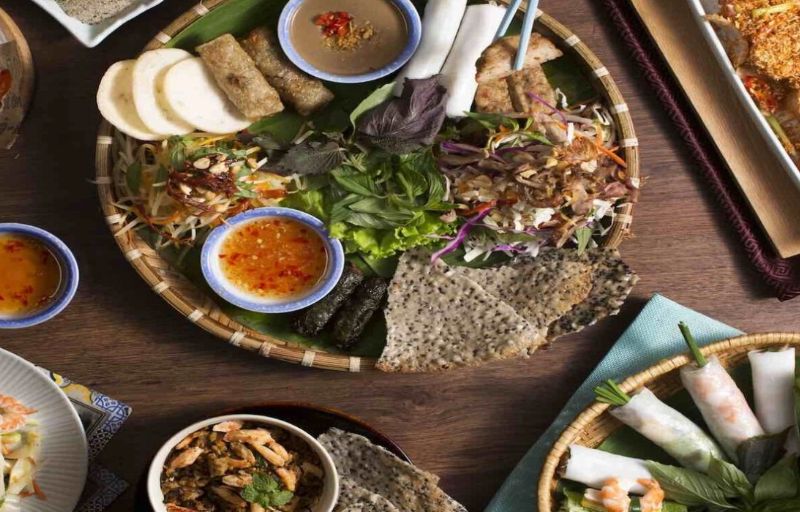
Tropical fruits you can only find fresh in the Mekong Delta
The Mekong Delta is a fruit orchard of seasonal tropical fruits with unique varieties at their freshest. For visitors, trying these fruits fresh from orchard trees or floating-market stalls is a highlight of any Mekong adventure.
- Watermelon: Grown especially in Long An, the watermelon is characterized by its thin rind, bright red interior, and few seeds. Perfect for warm weather, it’s commonly sold fresh-cut on roadside stalls as a cooling beverage when visiting farms.
- Coconut: In Tra Vinh and Ben Tre, coconuts are fresh-shelled and sold as beverages or processed into sweets, candies, and coconut wine. You can enjoy freshly broken coconut juice on boat cruises or sample different types at orchards, like the unusual waxy “dừa sáp”.
- Rambutan: May to July, island orchards in Binh Hoa Phuoc and Vinh Long are heavy with bright rambutans. Visitors can pick fruit from home gardens themselves and taste the succulent, sweet flesh there.
- Pomelo: Da Xanh and Nam Roi are two of the varieties that emit citrus sweetness. Grown during September to February in provinces like Ben Tre and Vinh Long, pomelos are eaten as a refreshing, crunchy snack or added to local salad meals.
- Mangosteen: The “queen of fruits,” mangosteens are ready to eat between April and July. In Ben Tre, they are hunted for thin skin, sour-sweet segments, ideal as a souvenir or orchard snack.
- Jackfruit: Scented “queen jackfruit” and giant varieties are ready from March to May, as well as in June. Markets and orchards in Can Tho sell fresh fruit, chips, and sweets made from their pulp.
- Star apple: Mature, jelly-like fruit containing sweet custard flesh is mainly found in Tien Giang and Vinh Long. Visitors can try it mature in orchard conditions or buy fresh at markets.
- King Orange: Harvested between November and May, this citrus contains a dense green rind and sweet orange pulp. Tasting easier in Vinh Long and Can Tho orchards, it’s also often freshly juiced.
- Purple Longan: Native to Soc Trang, this variety is ripe sometime in late June and has a crunchy texture, a light sweetness, and a purplish hue.
- Palmyra fruit: Grown in the Bay Nui district of An Giang, the fruit features pale kernels and a fragrant, slightly sweet taste. It’s normally processed into sugar, tea, or cake and is a local favorite not seen elsewhere.
- Pineapple: Hau Giang’s Cau Duc pineapple is sweet and sour and can be harvested all year round. Ideal for eating fresh or being grilled over the bonfire.
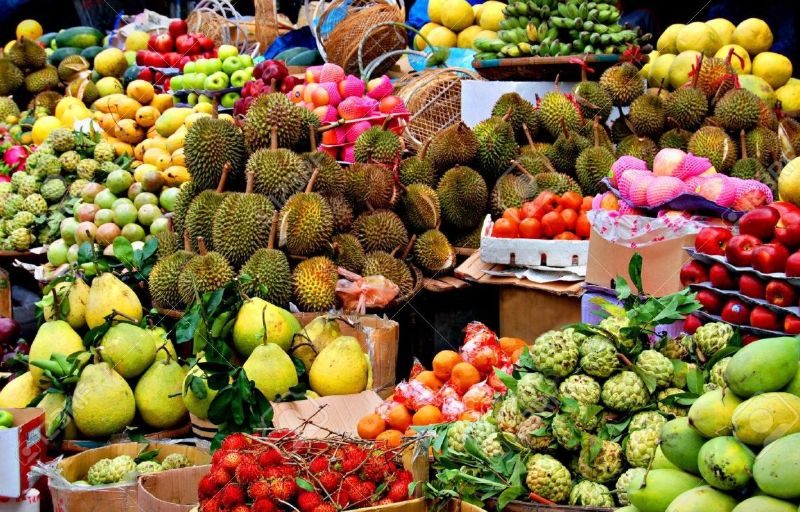
Read more: Experience an authentic Vietnam Mekong Delta tour
Best places to try authentic Mekong Delta food
Enjoying the Mekong Delta food at these places will give you the most authentic experience:
Floating markets
Floating markets in the Mekong Delta are the best places to try Mekong Delta food:
Cai Rang (Can Tho)
The largest and most vibrant floating market, Cai Rang, is best visited between 5:00-8:00 AM when hundreds of boats pull in along the Hau River with fresh fruit and warm food. Start the day here for bowls of hủ tiếu, bún riêu, bánh xèo, and bánh công consumed directly off the boat – all under a few USD. Observe how vendors carry their fruits on bamboo “cây bèo” poles and taste local drinks like fresh coconut water or coffee on the water.
Phong Dien (Can Tho)
Roughly 17 km southwest of Can Tho city is Phong Dien, a less hectic, more local market. Open from 5:00-8:00 AM, it has everything from fresh fruit to street foods like cá lóc nướng, bánh tằm bì, and early morning essentials like rice porridge and Vietnamese coffee. Fewer tourist boats make it perfect for those seeking an authentic Delta experience.
Long Xuyen (An Giang)
Another old floating market where boats arrive early morning to enjoy hủ tiếu, bánh canh, and homemade street food. A less hectic, quiet alternative for travelers who visit An Giang Province.
Nga Nam (Soc Trang)
This market, at the meeting of five rivers, begins as early as 3:00-4:00 AM and offers an unassuming multicultural food experience with rice porridge, noodle soups, and Khmer-style street food.
Riverside & local restaurants
Sao Hom Restaurant (Can Tho)
A riverside hot spot near Ninh Kieu Wharf. Open 6:00 AM to 10:30 PM daily, it serves Mekong Delta specialties – braised fish, hotpots, seafood – with room and river views.
Nam Bộ Restaurant (Can Tho)
Serves traditional Southern favorites, including caramelized clay-pot fish and coconut shrimp in a warm colonial setting. Reliable choice for everyday, substantial Delta fare.
Bassac Restaurant (floating boat, Can Thuoc)
Indulge in the refined version of Mekong food aboard a boat. Savor Vietnamese as well as French-influenced dishes, coupled with sunset views of the river.
Cung Đình (My Tho)
At My Tho, the restaurant is renowned for the elephant-ear fish of the Mekong, the crispy spring rolls, and flavorful noodle soups, prepared using Mekong fresh produce.
Chuon Chuon Kim (Ben Tre)
Situated in a garden setting, this hidden gem is famous for its coconut-infused dishes – ideal for travelers traveling southeast of Ho Chi Minh City.
Culinary experiences & cooking classes
Join a floating market tour that includes stops at orchards and food stalls – price ranges for boat trips are from ₫60,000–100,000 (~$2.50–4.30) per person. Some cooking schools, like those in Can Tho, offer classes where you learn to prepare spring rolls and other Delta specialties using market-fresh ingredients.
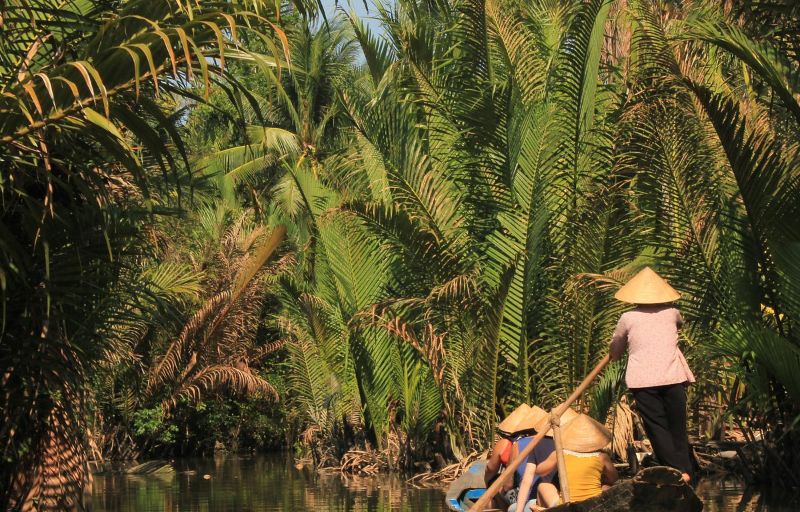
Secure your next great adventure with Lily’s Travel today! Founded in 2007, and backed by over 2,000 five-star Tripadvisor reviews, we’re recognized as a top travel agency in Hanoi and throughout Northern Vietnam. Our expertise spans 15 years of connecting foreign guests with Vietnam’s stunning landscapes and vibrant cultures, plus tailor-made tours into Laos and Cambodia. Our dynamic team uses cutting-edge 4.0 technology to preview tours in vivid 3D, while our focus on sustainable, community-centered tourism ensures meaningful experiences for both travelers and locals alike. Discover the real Indochina with Lily’s Travel’s professional, friendly service.
Mekong delta food is a must for any traveler seeking an authentic taste of Vietnam’s southern charm. Its fresh ingredients, bold flavors, and cultural layers make every meal a meaningful part of the travel experience.
Read more: Mekong Delta weather tips for every traveler



